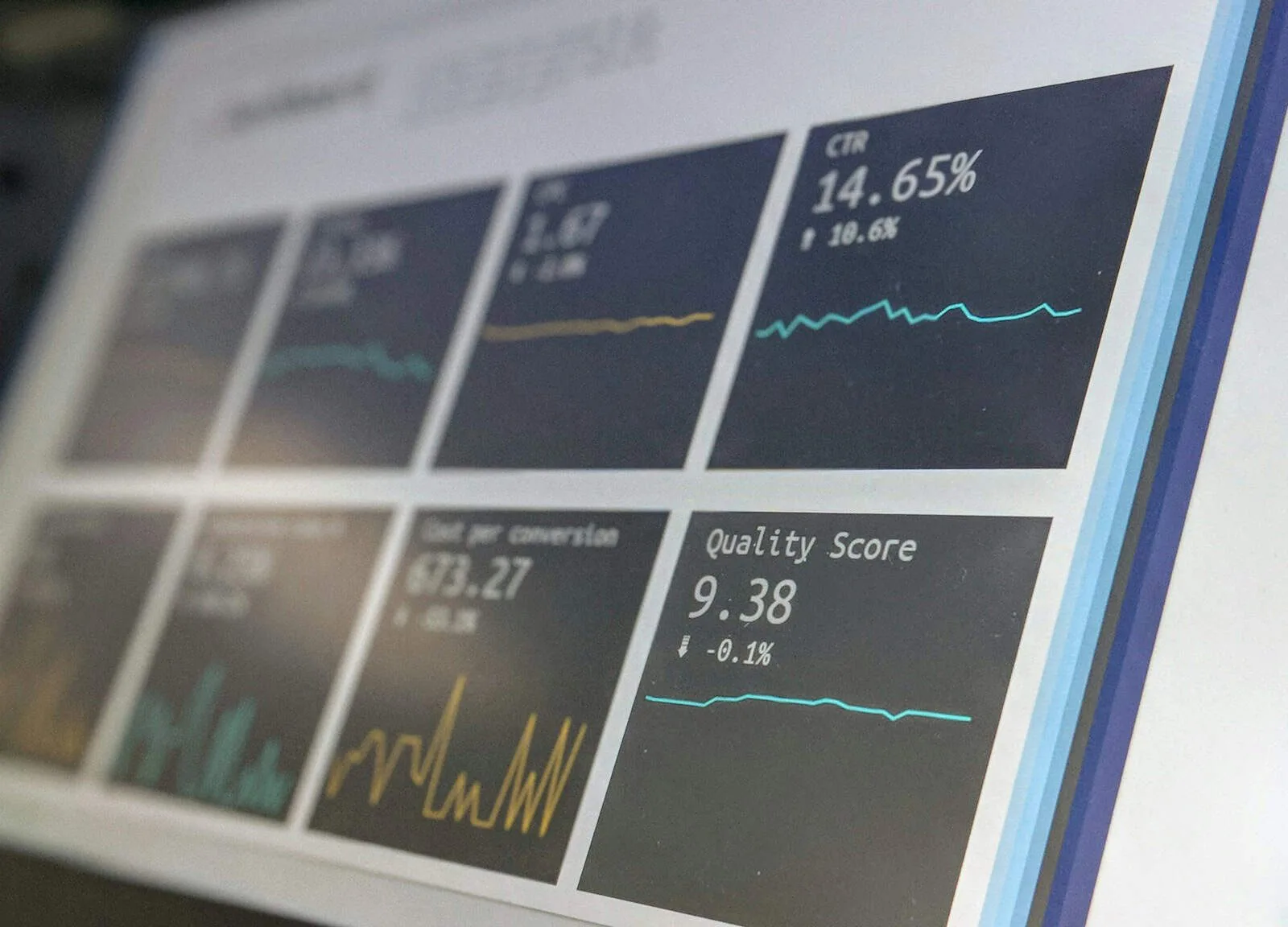I’ve dedicated years to refining risk prioritization techniques. Here’s the key takeaway: Risk prioritization is more than simply determining what threats exist. It’s a systematic way to evaluate and rank risks by their potential impact urgency and likelihood.
Doing so is the cornerstone of effective risk management. So, how do these techniques function, and why are they critical to your continuous improvement strategy?
Risk Prioritization Methods Overview

Risk prioritization methods are one of the core concepts in risk management. As an engineer with years of experience in industrial automation and condition monitoring, I know firsthand just how valuable these methods are. They’re not just high-level ideas – they’re actionable methods you’ll use on a daily basis.
Risk prioritization is the act of evaluating and ranking potential risks based on their likely impact and probability. The main things we evaluate are impact, probability, urgency, and detectability. By analyzing these things, we can determine which risks demand our immediate attention and which we can address at a later time.
In the broader context of risk management, prioritization is a key step in the process. It’s the step in between identifying risks and planning risk responses. Without effective prioritization, you’re essentially guessing when it comes to managing risks.
The benefits of doing this well are:
- Optimizing resource allocation
- Making better decisions
- Improving the success rate of projects
- Minimizing unexpected issues
- Communicating with stakeholders more effectively
Just remember that this isn’t a one-time activity. It’s a continuous process that needs constant attention and updates any time the project or business environment changes. To enhance your risk management strategy, consider implementing 8 disciplines to solve problems systematically.
Risk Matrices: A Visual Approach to Risk Prioritization

Risk matrices are one of my go.to risk assessment tools. They’re a visual representation of risks by likelihood and impact. The framework is simple, yet it’s a very effective way to look at which risks are most important to you.
To create and use a risk matrix:
- Identify potential risks.
- Assess the likelihood and impact of each risk.
- Plot each risk on the matrix.
- Use the matrix to prioritize your risk response strategies.
Risk matrices are great because they’re simple to explain to non.technical stakeholders, provide a quick visual of your risk landscape, and standardize risk assessments across an organization.
However, they’re not without flaws. They can oversimplify detailed risks, neglect interactions between risks, and the cutoffs between levels can feel a bit arbitrary.
To maximize the effectiveness of a risk matrix:
- Clearly define your likelihood and impact scales.
- Involve multiple stakeholders in ranking the likelihood and impact of each risk.
- Regularly update the risk matrix to add any ‘unknown unknowns’ as known knowns.
- Use the same criteria to rank risks across different projects, divisions, etc.
- Combine with another risk assessment tool for a more comprehensive view.
Quantitative Risk Prioritization Techniques
Quantitative risk prioritization methods are my go-to when you need accurate, data-backed insights. These methods rely on numerical data and statistical analysis to evaluate risks.
Expected Monetary Value (EMV) analysis is a popular example. EMV calculates the average value of future scenarios by multiplying each potential value by the probability of that outcome. I’ve used EMV to help clients make decisions about investments in equipment.
Monte Carlo simulation is another great option. It iterates through a risk scenario many times, each time selecting a different random value for uncertain variables. This produces a probability distribution of outcomes, which is very helpful for complex projects with many interacting risks.
Decision tree analysis is another excellent quantitative technique, especially if you’re making a sequence of decisions under uncertainty. The decision tree will show you the different paths you might take and the outcomes of each, helping you select the right decision.
Here’s a quick comparison of these four quantitative techniques:
- EMV: Best for basic scenarios with a clear financial impact
- Monte Carlo: Best for complex scenarios with many interacting variables
- Decision Trees: Best for sequential decisions under uncertainty
Each technique has its own strengths, and you’ll often use a combination of all three depending on the situation. For a more comprehensive approach to risk analysis, consider incorporating fault tree analysis into your toolkit.
Qualitative Risk Prioritization Approaches

While I enjoy the rigor of quantitative analytics, sometimes you just need a more adaptable solution. Qualitative risk prioritization is the answer. These techniques involve expert judgment and subjective opinions rather than hard data.
Qualitative risk scoring and ranking is a common strategy. Here, you score risks based on predefined criteria and then rank them. I’ve used this approach when there’s limited or unreliable numerical data.
The Delphi method is another qualitative technique that’s effective. It involves a panel of experts who anonymously provide their opinions on which risks matter, and then you aggregate the responses and send them back to the panel for further refinement. This process continues iteratively until you achieve consensus on risk rankings.
Advantages of qualitative methods include the following:
- Flexibility to analyze any type of risk
- Opportunity to include intangible factors
- Less reliance on historical data
- Easier to apply and understand
The downside is that qualitative strategies can be more subjective and it’s harder to compare risks globally across multiple projects or departments.
Use qualitative methods when:
- There isn’t reliable numerical data you can use
- Risks are very complex or intangible
- You need a quick assessment
- Stakeholder perceptions of risk most important
Keep in mind that the best solution is often a combination of both qualitative and quantitative methods. When dealing with complex risk scenarios, it’s beneficial to explore various root cause analysis methods to gain a deeper understanding of the underlying issues.
Probability-Impact Assessment
The Probability-Impact Assessment is the most basic form of risk prioritization. It’s a strategy I’ve used to evaluate everything from equipment failure risks to uncertainty in projects throughout my career.
In a Probability-Impact Assessment, you estimate two things for each risk you’ve identified:
- Probability: How likely is the risk to happen?
- Impact: If it does happen, how bad are the consequences?
To perform a Probability-Impact Assessment:
- List all the risks you’ve identified.
- Estimate the probability of each risk happening.
- Estimate the impact if it does happen.
- Give each risk a probability and impact score.
- Multiply the probability and impact scores together to get a risk score.
We often use a 1-5 or 1-10 scale to score both probability and impact. For example, a 1-5 scale might look like this:
Probability:
1 = Very low
2 = Low
3 = Possible
4 = High
5 = Very high
Impact:
1 = Insignificant
2 = Minor
3 = Moderate
4 = Major
5 = Catastrophic
The results of a Probability-Impact Assessment then help you prioritize risks and determine where to spend energy to mitigate them.
Risk Control Matrices

Risk Control Matrices (RCMs) are a very effective risk management tool. I have personally leveraged RCMs in much of my consulting work, where I help clients assess their entire risk landscape.
An RCM is a document that outlines each identified risk and its potential impact, likelihood, existing control, control effectiveness, and residual risk level. It’s like a centralized document for all things risk.
The basic structure of an RCM includes:
- Risk descriptions
- Potential impacts
Likelihood - Existing controls
- Control effectiveness ratings
- Residual risk levels
To build and maintain an RCM:
- Identify each risk and describe it in detail.
- Assess the potential impact and likelihood.
- List the existing control.
- Assess how effective the control is.
- Calculate the residual risk.
- Continuously revisit the matrix.
RCMs are helpful for ongoing risk management. They provide a snapshot of your current risk profile, help you identify where your control measures are missing the mark, and allow you to revisit your list of risks regularly.
By leveraging RCMs effectively, you can gain a better view of your risk exposure, allocate your risk management resources more effectively, communicate about risk more effectively throughout the organization, and make more informed decisions about how to manage risk. In addition to RCMs, consider implementing defect prevention strategies to proactively reduce risks in your processes.
Control Categories in Risk Prioritization
After years of experience with industrial systems, I’ve learned the value of understanding control categories in risk management. It helps us think about how we can manage prioritized risks more systematically.
Controls fall into four main categories:
Preventive: These controls attempt to prevent the risk event from happening. Safety locks, access controls, and quality checks are all examples.
Detective: These controls aim to identify that the risk event has occurred. Alarms, audits, and performance reviews are examples.
Corrective: These controls come into play after the risk event has occurred to reduce the impact. A disaster recovery plan and equipment repair procedure are examples
- Directive: These controls guide behavior to prevent the risk. Policies, procedures, and training programs are all examples.
Matching these control types to prioritized risks is critical. Many high-priority risks require multiple control types to effectively manage.
When evaluating control effectiveness, ask:
- How effectively does the control manage the risk?
- Is the control designed to manage the risk applied consistently?
- How long does it take the control to mitigate the risk once it occurs?
- What’s the cost benefit of the control?
Just remember, no control is 100% effective. The goal is to find the right combination of controls to effectively manage your prioritized risks. To enhance your risk management strategy, consider developing a crisis response planning framework to address potential high-impact events.
Residual Risk Assessment

Residual risk is another often forgotten risk concept, yet it’s critical to risk prioritization. This is the risk that still exists after control implementation. I can’t tell you how many times I’ve seen teams forget about residual risk and then face issues later.
To calculate residual risk, you assess the inherent risk (risk without any controls), determine how effective your control is, and then subtract the risk reduction achieved by the control from the inherent risk.
Once you have the residual risk level, ask yourself if the residual risk level is okay, whether you can implement more controls, how it ranks against other residual risks, and the cost benefit of eliminating more risk.
When it comes to incorporating residual risk into prioritization decisions, you might just accept the residual risk if it’s low, transfer it with insurance or a contract, implement more controls, or even decide not to do it at all if the residual risk is too high.
Keep in mind that evaluating residual risk is ongoing. As your business changes, so too will the residual risk level.
Risk Prioritization Standards and Frameworks
In my experience, I’ve found a lot of value in implementing standardized risk prioritization frameworks. Using a standardized risk prioritization framework gives you a common language and methodology that can make a big impact on your risk management strategy.
The ISO 31000 risk management standard is the most widely recognized risk management standard globally. It offers the principles, framework, and a risk management process that you can use in any organization. It’s not prescriptive, but rather provides some general principles and a framework that you can adjust to your needs.
The COSO ERM (Enterprise Risk Management) framework is another great option. It allows you to integrate risk management into your strategic planning and performance management. I’ve found that to be a useful framework when an organization wants to integrate risk management into its overall business strategy.
There are also frameworks designed for specific industries. For example, in the finance world, Basel III provides a framework for managing risk. In IT, COBIT and ITIL have frameworks for managing risk.
The main advantages of implementing these frameworks are:
- Improved consistency of risk assessment throughout the organization
- Increased credibility with stakeholders
- Better adherence to industry best practices
- More thorough discussions of risk with third parties
- Potential to benchmark against other organizations
Just remember that these frameworks are tools, not a religion. Utilize them as a baseline, but adjust them to meet your organization’s specific needs.
Technology Solutions for Risk Prioritization

In the modern digital world, using technology for risk prioritization is no longer just nice to have – it’s a necessity. I’ve witnessed how the right risk management software solutions can revolutionize an organization’s risk management capabilities.
There are many risk management software solutions that can automate much of the risk prioritization process. They can simplify data collection, execute advanced calculations, create visual representations of your risk environment, and more.
When selecting risk prioritization technology, look for these key features:
- Easy to use
- Customizable risk assessment criteria
- Automated risk scoring and ranking
- Real-time monitoring of your risk environment
- Strong reporting and visualization capabilities
- Integration with other business systems
On that note, integration is a key consideration. Your risk prioritization tool shouldn’t be a silo – it should be able to pull and push data to other systems like your ERP, business intelligence platforms, project management tools, and so on.
I’ve also seen successful implementations of risk prioritization technology result in:
- More efficient risk assessment activities
- Increased alignment and consistency in how risks are evaluated across the organization
- Better insights into risk trends over time
- More collaboration in risk management activities
- Better decisions based on more timely insights
Just remember that technology is only a tool, and the tool won’t fix a broken risk management process or a culture that doesn’t value managing risks.
Parting Thoughts
Risk prioritization is an essential aspect of good risk management. You can learn and apply different strategies (risk matrices, quantitative techniques, qualitative methods) to decide which risks to address first. Don’t forget to evaluate likelihood and impact of risks and residual risk after controls. Using standardized frameworks and technology tools can also improve your risk prioritization. At the end of the day, prioritizing risks effectively will protect your organization’s assets and goals.






